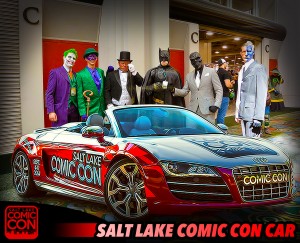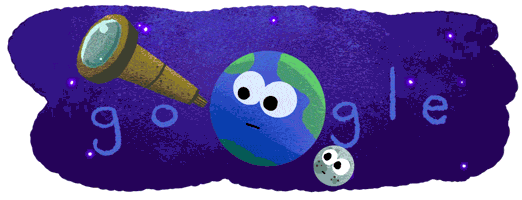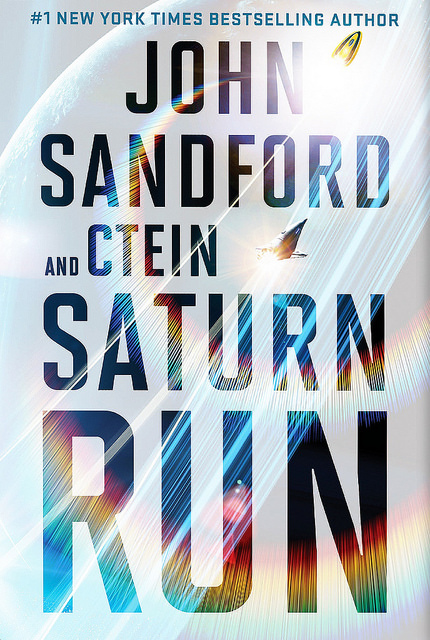(1) HELSINKI NEWS. Worldcon 75 is holding an Academic Poster competition and would very much like participation from as many university students and researchers as possible.
We are hosting a science, technology, engineering, mathematics, and medicine (STEMM) poster competition for undergraduate students, graduate students and post-doctoral researchers. The competition is also open to posters that explore the connections between STEMM subjects and SF/fantasy/horror. There will be a €100 prize for the poster that best communicates research to the general public.
Presenters will be able to share their research with an audience that is very interested in science, technology, engineering, mathematics, and medicine, but where many audience members will not have been formally educated in STEMM subjects. In addition, presenters will be invited to give five minute mini-talks on Saturday 12th August 2017 explaining their research. Taken together, the posters and mini-talks represent an exciting opportunity for the presenters to practice research communication, and for audience to learn about cutting-edge research.
If you are interested in displaying a poster then fill in our web form below or follow this direct link to the form.
The deadline for applications is 1st May 2017 and we will inform you of our decision by mid-June.
(2) DREAM FULFILLED. Phil Kaveny, who I know from the Mythopoeic Society, announced the script for his play “The Munitions Factory” is available from Amazon Kindle. He calls it “My project of a lifetime.”
The Munitions Factory is a play about love, money, revolution, and the military industrial complex. Set in Imperial Germany in 1917 during the worst winter in German history, The Munitions Factory is really about our world in the 21st century. It is a hard driving play that will jar you out of your complacency, and it is also a compelling love story about characters who walk the razor’s edge between desperate love and repulsion that is common in wartime.
(3) DOWN TO THE WIRE. In comments Jonathan Edelstein pointed out that “a team headed by the heroic Jake Kerr is putting together a 2017 Campbell-eligible anthology.”
The submission form is here for any Campbell-eligible authors (first pro publication in 2015 or 2016) who want to submit a sample of last year’s work.
(4) ODDS FAVOR THE HOUSE. The Conservative-Libertarian Fiction Alliance opened voting today for the CLFA Book of the Year Awards.
CLFA an online group of readers, authors and other creative individuals who want to see more freedom-friendly storytelling in the marketplace. We provide our members with networking opportunities as well as a safe, friendly and open environment for both political and creative discussions. We are currently at over 1300 members strong, with new participants joining us on a daily basis….
CLFA Book of the Year Awards, now in their third year, seek to recognize the best in freedom-friendly fiction. To qualify for entry in the CLFA 2017 Book of the Year contest, the work has to be over 50k words and first published in any form in 2016. Our members voted to arrive at the Top 10 list, which is now open to the public for the final vote.
Voting is open until midnight on March 31, 2017. Winners to be announced in April 2017. Voting happens here.
The finalists are:
- Iron Chamber of Memory by John C. Wright
- Discovery by Karina Fabian
- Set to Kill by Declan Finn
- By the Hands of Men, Book Three: The Wrath of a Righteous Man by Roy M. Griffis
- Murphy’s Law of Vampires by Declan Finn
- Chasing Freedom by Marina Fontaine
- Domino by Kia Heavey
- Monster Hunter Memoirs: Grunge by John Ringo
- Souldancer by Brian Niemeier
- Brings the Lightning by Peter Grant
At the moment Peter Grant’s novel from Castalia House is leaving the field behind. He’s got 50 votes to 25 votes for John C. Wright’s novel (also from Castalia House). Last year’s Dragon Award-winning Souldancer by Brian Niemeier has one vote so far.
(5) INJUSTICE. Australia writer Tom Taylor, of Injustice Gods Among Us and Injustice 2 comics, told his Facebook readers he won’t be at Emerald City Comic Con this week and or other U.S. events.
Sadly, I won’t be attending Emerald City Comicon in Seattle this week.
I have also turned down all other US signing and convention invitations so far this year.
I know I’m far from the only person concerned about traveling to the States at this time, but I wanted to explain my decision.
I want to start by saying this decision was incredibly difficult. I was really looking forward to this trip. I have traveled to the US regularly since 2009. This year, I have four different books with three different publishers, and a TV series to promote. Beyond this, I have fans and colleagues I was looking forward to meeting. I also have many good friends in the States, and I was looking forward to catching up with all of them. Truth be told, I’m missing them.
But America, through no fault of most of its citizens, doesn’t feel like a safe or welcoming travel destination at this moment.
There have been reports of interrogation, phone data downloads, requests for social media accounts, returns and five-year travel bans and everyone from children to the elderly being detained. All of this has many people I’ve spoken to reconsidering or cancelling their US travel plans.
I’ve had friends and people I work with suggest I leave my phone at home, or delete my twitter account for a month before I come.
I refuse those terms.
My twitter account isn’t complimentary towards the current administration, but it’s far from inflammatory and shouldn’t need to be scrutinized to gain entry to a country where free-speech is so highly valued.
Traveling fifteen hours on a plane is bad enough. Travelling towards uncertainty, half-worried about being caught in limbo by overzealous border security, with my wife and children wondering why I haven’t called, is nightmare fuel…..
(Via Comicsbeat.)
(6) PENRIC SEQUEL. Lois McMaster Bujold’s latest novella Mira’s Last Dance (Penric & Desdemona Book 4) is out.

(7) VOTE FOR PAUL WEIMER. Ten days ‘til Down Under Fan Fund voting closes. The deadline is midnight, March 10 (PST). Our Paul Weimer is the only candidate for the trip to the Australian National Convention, but the contribution of $5 or more accompanying your vote will help keep the fund going during and after Paul’s trip. Click here to get started.
CANDIDATE PLATFORM
Paul Weimer
I’m a podcaster for the Skiffy and Fanty podcast, the SFF audio podcast, a noted SF/F book reviewer and a regular panelist at local cons. I am also an amateur photographer. I have only been to one international con, the Worldcon in London in 2014, and would love to broaden my international fandom connections. If I have the honor of being selected, I aim to build the links I already have with Australian fandom (in things like being a prior participant in The Australian SF Snapshot) into face to face interviews, meetings, and more with fans and genre folk at Continuum and elsewhere in Australia. Have camera and recorder and ready to travel!
Nominators: North America: Mike Glyer, Arref Mak, and Jen Zink. Australasia: Gillian Polack and Alexandra Pierce.
(8) GLOWING REVIEWS. Jason continues to burn the midnight oil and has melted down another month of online science fiction and fantasy offerings into a shiny list of favorite stories in “Summation of Online Fiction: February 2017” at Featured Futures.
Thirteen February pro-rate webzines (the same as last month’s list except that a new bimonthly issue of Compelling replaced the defunct Fantastic) produced forty-three stories of 196,912 words. I most appreciated six (amounting to 14% of the whole)…
(9) SMALL WORLD, BIG NEWS. ChiZine Publications has cut an illustrated book deal with George A. Romero, creator of The Night of the Living Dead. They have acquired The Little World of Humongo Bongo, an illustrated book, originally published in French.
The Little World of Humongo Bongo is the tale of fire-breathing giant Humongo Bongo, who lives on the tiny planet of Tongo. Gentle and curious, his world is thrown upside down when he encounters a race of tiny people named the Minus, who initially worship him as a God but then turn on him when they succumb to fear, greed and the lust for power….
The Little World of Humongo Bongo will be published in Fall/Winter 2017, in association with Dave Alexander’s Untold Horror, a multi-media brand dedicated to exploring the greatest horror stories never told.
(10) TODAY IN HISTORY
- March 1, 1692 — The Salem Witch Trials began in Massachusetts with the conviction of West Indian slave, Tituba, for witchcraft.
(11) CALLING ALL SMOFS. Kevin Standlee shared the news that as of yesterday there was still no bid for the 2019 Westercon, to be selected this July in Tempe.
Any site in Western North America (or Hawaii) is eligible. (Nobody filed by the end of December 2016, so the exclusion zone is suspended.) The filing deadline for the ballot is April 15, 2017. If no bid files by then, site selection won’t have any bids on the ballot, and I probably will have to ask Tempe for a larger room and longer time slot for the Westercon Business Meeting.
So here’s your chance to host a Westercon!
The bidding requirements are in the Westercon Bylaws, Article 3. The bylaws are on the Westercon web site at http://www.westercon.org/organization/business/
It’s approximately the same as Worldcon, with minor differences. The outline is the same: file bidding papers, and if the voters at the administering Westercon select you, you get the bid. If nobody wins, the Business Meeting decides.
(12) SLCC UPDATE. Here’s Bryan Brandenburg of the Salt Lake Comic Con appearing before the Utah Legislature (to the right of the flag). In his address, Bryan emphasized that their intent is to fill the void and not replace the other commercial events.

(13) ROBOMALLCOP. Francis Hamit is sufficiently impressed with the company that he bought some stock. “I thought this might be of interest. Securitas is the largest provider of contract human security officers in the world. Knightscope is a new company with a unique robotic system that does not replace human officers but does greatly extend their range.” And they have some good news.
Knightscope, developer of advanced physical security technologies focused on significantly enhancing US security operations, and Securitas AB (SECU-B.ST), the world’s second largest private security company, announced today that the parties are extending their channel partner agreement through February 2020. The agreement gives Securitas Security Services USA, Inc., a subsidiary of Securitas, rights to offer Knightscope’s technologies to its significant existing customer base, while Knightscope continues to develop new technologies and provide operational support.
Hamit adds:
Any resemblance to the Daleks is strictly coincidental. I am sure.

(14) UNDERSTANDING FUTURISM. New from McFarland, Science Fiction and Futurism: Their Terms and Ideas by Ace G. Pilkington.
Science and science fiction have become inseparable—with common stories, interconnected thought experiments, and shared language. This reference book lays out that relationship and its all-but-magical terms and ideas. Those who think seriously about the future are changing the world, reshaping how we speak and how we think.
This book fully covers the terms that collected, clarified and crystallized the futurists’ ideas, sometimes showing them off, sometimes slowing them down, and sometimes propelling them to fame and making them the common currency of our culture.
The many entries in this encyclopedic work offer a guided tour of the vast territories occupied by science fiction and futurism.
Beware, it will help multiply the number of books on your TBR pile. In his Foreword, David Brin says, “Provocative and enticing? Filled with ‘huh!’ moments and leads to great stories? That describes this volume.”
(15) RING THAT BELLE. John Ostrander talks about The Other in “The Face in the Mirror” at ComicMix.
The most recent issue of Entertainment Weekly featured an article about and interview with Emma Watson, playing Belle in the upcoming live-action Disney version of Beauty and the Beast. She may be best known for playing Hermione in the Harry Potter films. In addition to being very talented, Ms. Watson is also very smart and very articulate. As the article notes, she has also been a leader in feminist causes.
In the article, she’s asked why it is hard for some male fans to enjoy a female hero. (Witness the fanboy furor at the all-female remake of Ghostbusters and the female leads in the last two Star Wars films.) She replied: “It’s something they [some male fans] are not used to and they don’t like that. I think if you’ve been used to watching characters that look like, sound like, think like you and then you see someone [unexpected] up on the screen, you go ‘Well, that’s a girl; she doesn’t look like me. I want it to look like me so that I can project myself onto the character.’. . .for some reason there’s some kind of barrier there where [men] are like: ‘I don’t want to relate to a girl.’”
That sounds right to me. We’ve seen that attitude prevalent not only in movie fans but comic fans as well. There’s a wish fulfillment, a fantasy fulfillment, in comics and comics-related TV and movies, in fantasy as well and we want to be able to easily project ourselves into that. For some male fans, a woman doesn’t cut it. The bias also can extend to seeing someone of a different race as the hero. I think it’s certainly true about sexual identity as well. To appeal to a certain demographic, the hero, the lead, cannot be female, or black, or gay. And heaven forbid they should be all three; tiny minds might explode….
Are you Arab? Do you wear a turban? Are you black? Are you gay? Are you female? Then you are not like me, you are “Other.” And that is inherently dangerous. We cannot be equal. It comes down to “zero-sum thinking” which says that there is only so many rights, so much love, so much power to be had. If I have more of any of these than you, I must lose some for you to gain.
Some of the people feel they don’t have much. I remember a line from Giradoux’s one-act play The Apollo of Bellac: “I need so much and I have so little and I must protect myself.” Sharing is not gaining; sharing is losing what little you may have.
Except it’s not. If for you to keep your power intact, you must deny someone else the power to which they have a right, it’s not really your power. It’s theirs and it’s been stolen.
Pop culture has its part to play. Putting women, blacks, gays, Latinos, and others in the central role helps normalize the notion of equality. Mary Tyler Moore did it; Bill Cosby (gawd help me) did it, Rogue One does it. However, pop culture can – and has – also re-enforced negative stereotypes. So – how do we engage it for more positive results?
Denny O’Neil, many years ago, when he was editing a special project I was working on told me, “You can say anything you want but first you have to tell a story.” That’s your ticket in. “Tell me a story” appeals to the very roots of who we are as human beings. It’s how we explain and codify our world. If you want to open a closed mind, go through the heart. Don’t lecture; engage. Show, don’t tell. Showing women, blacks, LGBTQ, Latinos, Asians, and so on as heroes, as something positive, normalizes the notion. If I can be made to identify with them then The Other is no longer strange; they are me and, thus, not other.
(16) BRADBURY ASSOCIATIONAL ITEM. I’d tell you to start shaking the change out of your piggy bank except that will only work if you filled it with gold sovereigns. Still available on eBay, Ray Bradbury-owned oil painting by Raymond Bayless. Price: $15,000.
Ray Bradbury personally owned Raymond Bayless painting, titled, “War of the Worlds, H.G. Wells”. Art depicts the famous naval battle from the story between a martian “Tripod” weapon and English ironclad, the HMS Thunder Child. Cityscape along the horizon is on fire, and the ship also goes up in flames with a cloud of black smoke, the martian chemical weapon, rising from it. Painting features a color palette of predominantly light blues and greys, accented in orange, black and white. Signed, “Raymond Bayless 91,” at lower left. A sticker on verso is also signed by the artist. Oil on Masonite painting is framed to an overall size of 18.75″ x 24.75″. Near fine. With a COA from the Bradbury Estate.
[Thanks to David Doering, Cat Eldridge, Francis Hamit, JJ, Jonathan Edelstein, and John King Tarpinian for some of these stories. Title credit goes to File 770 contributing editor of the day John From GR.]











